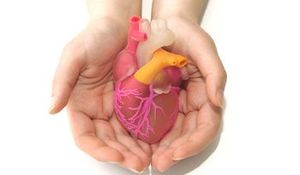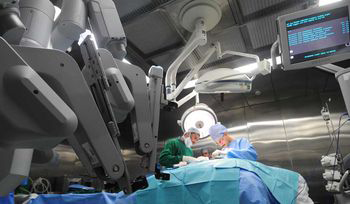The health care sector is ever-evolving. Here are a few promising trends that will continue to shape India's medical sector.

Telemedicine: Telemedicine is the use of telecommunication and information technology to deliver health care at a distant location. This is a way to address two major challenges—lack of manpower and accessibility—that India's health care sector is facing. In August, the government launched Social Endeavour for Health and Telemedicine (SEHAT), a pan-India health initiative in line with the Digital India vision. The initiative, which will be run in collaboration with Apollo Hospitals, aims to connect 60,000 common service centres across the country and provide health care access to citizens irrespective of their geographical location. Mobile phones, with their increasing penetration in India, are also playing a significant role in creating awareness on health.

3D printing: This has been an exciting year for 3D printing in the medical field. While medical professionals across the world have begun to tap into the possibilities of 3D printing technology, doctors in India are using the technology to generate surgical models to guide them before and during a surgical procedure. This, in turn, increases efficiency. A fine example was the case of 11-month-old Lavesh Navedkar, who received a life-saving heart surgery to fix a rare congenital defect; doctors used a detailed 3D-printed model of his heart.

Robotic surgery: Robotic, or robot-assisted surgery, has moved out of the pages of fiction and into our operation theatres. It started off in India with a surgical procedure aided by ‘da Vinci Surgical Robot’ in 2002. Today, the technology is being used by 25 hospitals with 120 surgeons performing robotic surgeries which are expected to cross 6,000 this year. The inherent advantages of robotic surgery over laparoscopic surgery include enhanced magnification, 3D-vision, motion scaling, precision and control of operating instruments. From the patients’ perspective this means smaller incisions, decreased blood loss, less pain, and quicker healing and consequent reduction in hospital stay. As robotics creates a mini revolution in surgery in India, cost is a factor that slows down its growth rate and the need is to develop indigenous surgical robots.

Diagnosis: With technological advancements and improved efficieny, the diagnostics sector has been witnessing immense progress. Diagnostic medical imaging has shown tremendous growth. Diagnostic imaging device sector in India is estimated to register robust growth rate through 2022. In the past decade, India witnessed technological shift from analogue to digital and imaging solutions became less expensive. Be it CT, PET, MRI scans or advanced ultrasound imaging, major suppliers of these high-end imaging systems are looking to modify their products to meet the needs of the Indian health care scenario.

Stem cells: The stem cells market in India is anticipated to grow by more than 28 per cent over the next five years. This growth is anticipated on account of increasing investments from the government as well as private organisations, growing industry focus on stem cell research, and rising awareness about stem cell banking. With the stem cell market in India estimated to touch $600 million by 2017, the government is focusing on a strategy to leverage intellectual talent and conduct basic and applied research in stem cell technology.
Emergency care: This year saw the development of a number of smartphone apps to help manage medical emergencies. Besides these, right from a network of traffic management, ambulance and emergency health care workers, cities have been looking at improving the way medical emergencies are handled. Creation of 'green corridors' to facilitate transportation of hearts for transplantation during peak hours in cities like Chennai, Mumbai and Kochi, was a fine example of emergency health care. Emergency medicine is a rapidly evolving speciality which has received increased recognition by the government over the past few years.





